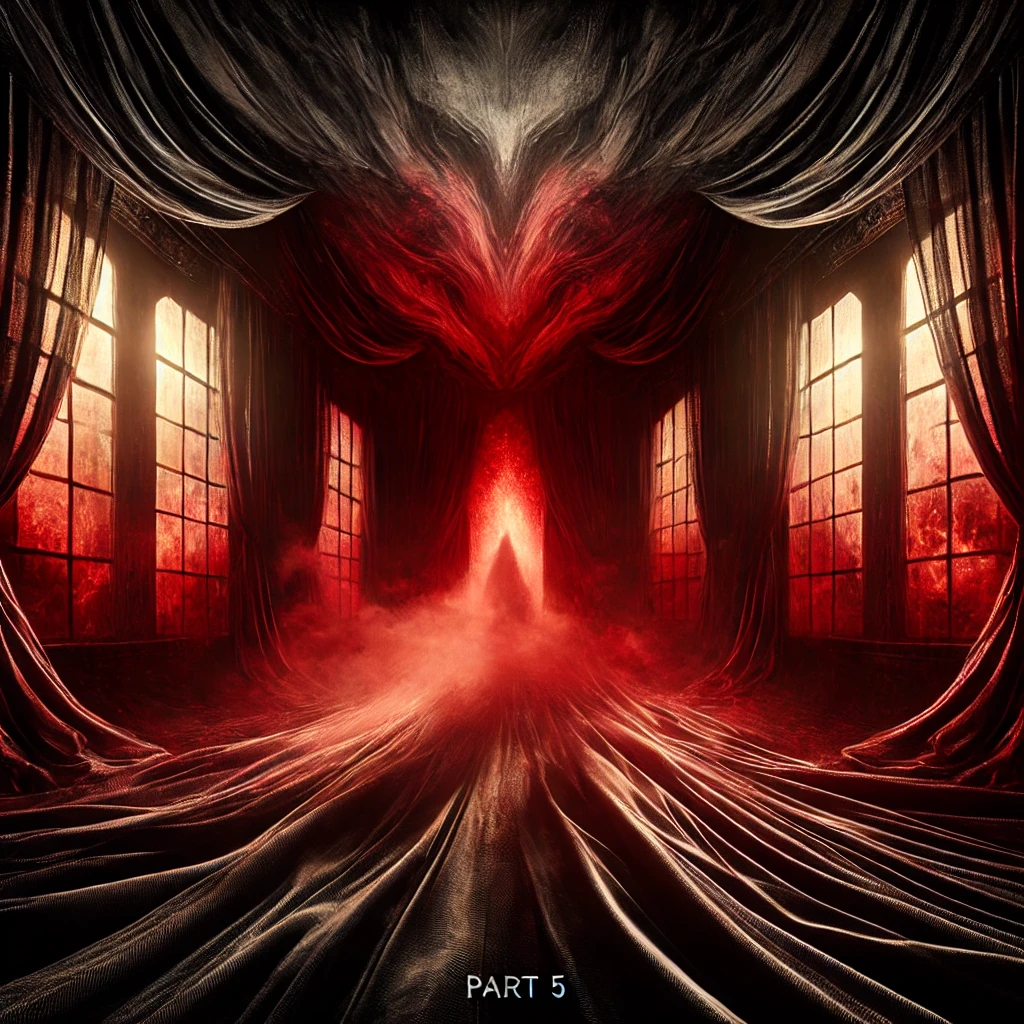Lucifer, often misunderstood as a figure of darkness, represents the unmasking of illusions and the illumination of truth.

The black room in The Masque of the Red Death stands apart from the other six chambers. Draped in heavy black velvet and illuminated by scarlet-tinted windows, it is a space that evokes both dread and fascination. This room is more than just the setting for the story’s climactic moment; it is the symbolic heart of the tale, a place where the veil between life and death, light and shadow, is at its thinnest.
A Space of Fear and Revelation
For Prince Prospero and his guests, the black room is a place to be avoided. Few dare to step into its darkened interior, where the light is distorted by the blood-red glass and the massive ebony clock casts its solemn presence. This avoidance mirrors humanity’s reluctance to face the shadow—the darker aspects of self that we suppress or deny. Yet it is in this room, this space of ultimate confrontation, that our truth reveals itself.
From my perspective, the black room represents the threshold of transformation. It is the space where the shadow self emerges, demanding to be acknowledged and integrated. To step into the black room is to confront mortality, the illusions of control, and the truth of our infinite nature. It is a space of revelation, where the masks of the masquerade fall away, and we are left with nothing but the essence of who we are.
The Union of Light and Dark
The scarlet-tinted light in the black room adds another layer of symbolism. Red is often associated with life force, passion, and vitality, but also with blood and mortality. In this room, the interplay of black and red reflects the union of light and dark, of life and death. This is the alchemical crucible where transformation occurs, where opposites merge to create something new. From a spiritual perspective, the black room is not a place of despair but of profound unity and wholeness.
Lucifer’s archetype as the Lightbringer offers a compelling parallel here. Lucifer, often misunderstood as a figure of darkness, represents the unmasking of illusions and the illumination of truth. In the black room, this dynamic plays out on a grand scale. The room’s darkness invites us to confront our fears, while its scarlet light offers the possibility of redemption and transformation. It is through this union of light and dark that we find our true selves, our true Love.
Facing Mortality and the Shadow
The black room’s connection to death is undeniable. It is here that the Red Death appears, claiming Prospero and his guests. Yet this moment is not merely one of destruction but of revelation. The Red Death serves as a mirror, reflecting the inevitability of mortality and the futility of avoiding our truth. From a Gnostic perspective, death is not an ending but a transition—a doorway to deeper understanding and integration.
To step into the black room is to face both death and the shadow self. These two forces are intricately linked, as both require us to surrender our illusions and embrace the all that we are. The shadow holds the parts of ourselves we fear, yet it also holds the key to our liberation. When we allow ourselves to face the shadow, we discover that it is not an enemy but a guide, leading us to greater wholeness.
Reflection: Crossing the Threshold
The black room challenges us to ask: what truths are we avoiding? What masks are we still wearing? One does not step across this threshold lightly. It must come from a clear, sincere, and honest choice. Once we do, it is then that the Dragon comes forward fully, revealing everything that stands in the way of our realization. And what might happen if we stepped fully into the shadow, allowing it to reveal its gifts–and allowing ourselves to receive those gifts? This room invites us to cross the threshold, to move beyond fear and into the embrace of our infinite nature.
As we reflect on the symbolism of the black room, let us remember that it is not a place of punishment but of grace. It is the space where transformation occurs, where light and dark unite, and where we discover the truth of who we are. The black room, with its eerie light and heavy shadows, is not the end but the beginning of a deeper, more authentic existence.
Attachment to matter gives rise to passion against nature. Thus, trouble arises in the whole body.
